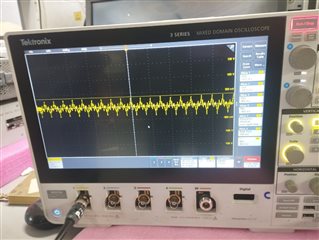Tool/software:
Dear Team,
We are using LMZ31530RLGT for 0.95V generation.It is working fine for past three years.Now 0.95V is not generated, while debugging comes to know that high impedance observed between PGND and AGND of LMZ31530.As per data sheet PGND and AGND is shorted internally and no need to short externally.
We are having provision to short AGND and PGND in our PCB design. When we are using this resistor to short PGND and AGND, output voltage is generated properly.
Is it advisable use this external resistor to short AGND and PGND? Please provide your suggestions or valuable feed back as soon as possible.
Regards,
Shenbagavalli S
Data Patterns (India) Ltd,
Chennai.


